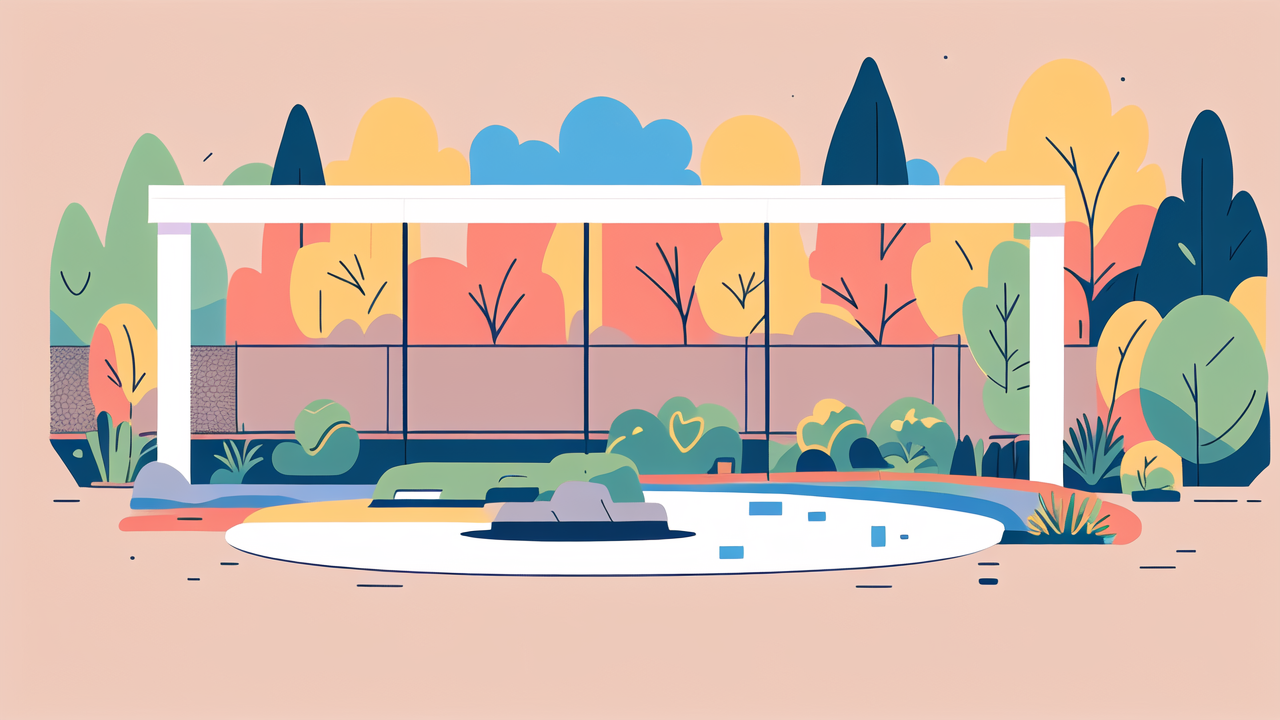Introduction to DIY Privacy Fences
Understanding the Need for Privacy in Home Gardens
Privacy is a key factor in creating a comfortable outdoor space. A private garden lets you relax without feeling exposed. It creates a personal oasis away from prying eyes and noise. Many homeowners seek ways to enhance their garden's privacy.

Benefits of a private garden include:
- A sense of security and peace
- Freedom to enjoy outdoor activities without interruption
- Protection from nosy neighbors or passersby
- Increased property value
A well-designed privacy fence can transform your outdoor area into a secluded retreat.
DIY Fencing: A Cost-Effective Alternative to Hiring a Pro
Building your own privacy fence can save money and be rewarding. DIY fencing allows you to customize your design to fit your exact needs. It's a great way to improve your home without spending too much.
Advantages of DIY fencing include:
- Significant cost savings compared to professional installation
- Control over materials and design
- Flexibility in timing and pace of work
- Satisfaction of completing a home improvement project
With some planning and effort, you can create a beautiful fence that enhances your property.
Selecting the Right Materials for Your Privacy Fence
Evaluating Durable and Sustainable Options
Choosing the right materials is crucial for a long-lasting privacy fence. You want something that can withstand weather and look good for years. Consider durability, maintenance, and environmental impact when making your choice.

Popular fencing materials include:
- Wood: Classic look, requires regular maintenance
- Vinyl: Low maintenance, long-lasting, but can be expensive
- Metal: Durable and sleek, but may lack privacy
- Composite: Combines wood and plastic for durability and style
Each material has pros and cons. Think about your climate and how much upkeep you're willing to do.
The Best Time to Build a Privacy Fence: Seasonal Considerations
Timing is important when planning your DIY fence project. The best time to build depends on your local weather and personal schedule. Generally, spring and fall offer ideal conditions for outdoor work.
Consider these factors when choosing your build time:
- Weather: Avoid extreme heat, cold, or rainy seasons
- Ground conditions: Soil should be workable, not frozen or muddy
- Your schedule: Ensure you have enough free time to complete the project
- Local regulations: Check if there are any seasonal restrictions on construction
Planning your project for the right season can make the building process much easier.
Step-by-Step Guide to Constructing Your DIY Privacy Fence
Planning Your Fence Layout for Maximum Effectiveness
Good planning is key to a successful DIY fence project. Start by deciding where you want your fence and how tall it should be. Think about property lines, sun exposure, and local rules.

Follow these steps to plan your fence:
- Measure your property and sketch your plan
- Mark the fence line with stakes and string
- Check for underground utilities before digging
- Count how many posts and panels you'll need
- Calculate materials and costs
A well-planned layout ensures your fence provides privacy while following local regulations.
Detailed Instructions for Building a Privacy Fence
Building your own privacy fence can be a fun and rewarding project. Follow these steps to create a sturdy and attractive fence:
- Gather all necessary tools and materials
- Dig post holes at regular intervals along your fence line
- Set posts in concrete and let them cure
- Attach horizontal rails to the posts
- Install fence panels or boards
- Add any decorative elements like post caps
Take your time with each step. Make sure everything is level and secure. Don't rush the process, as careful work leads to better results.
Tips and Tricks for Finishing Touches and Final Adjustments
The final steps can make a big difference in how your fence looks and works. Pay attention to details for a polished result. Here are some tips to finish your fence:
- Sand rough edges on wood fences to prevent splinters
- Apply a weather-resistant stain or paint for protection
- Check that all gates swing freely and latch properly
- Add lighting for nighttime safety and ambiance
- Plant climbing vines or flowers to soften the fence's appearance
These finishing touches will help your DIY fence look professional and enhance your outdoor space.
In conclusion, building a DIY privacy fence is a great way to improve your home's outdoor area. It offers privacy, security, and a chance to show your personal style. With careful planning and the right materials, you can create a beautiful fence that adds value to your property. Remember to check local rules and take your time with the project. The result will be a private, peaceful outdoor space for you to enjoy for years to come. Whether you choose wood, vinyl, or another material, your new fence will transform your garden into a personal retreat. Enjoy the process of building and the satisfaction of completing a major home improvement project. Your outdoor space will thank you for the added privacy and style.
